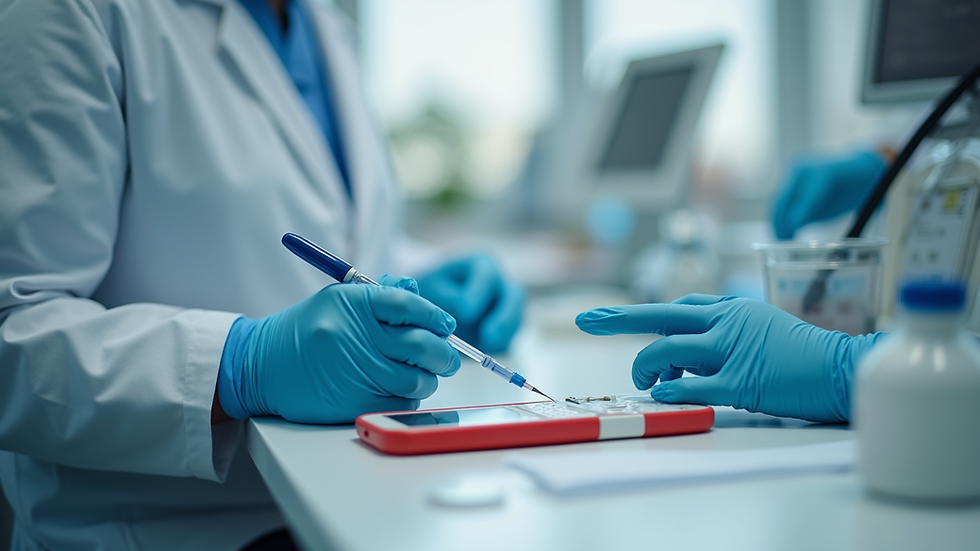Navigating the High-Stress World of Phlebotomy Workplaces
- Tequella Arkadie

- 7 days ago
- 3 min read
Phlebotomy plays an essential role in the healthcare system. Phlebotomists draw blood for tests, transfusions, and donations, which are crucial for effective patient care. However, the stress involved in their work often goes unnoticed. Understanding the key stressors in phlebotomy can help current and aspiring professionals, as well as healthcare facilities, create a more supportive and productive environment.
The Nature of Phlebotomy Work
Phlebotomy is more than just drawing blood; it is about helping patients who may feel anxious or fearful. For instance, about 80% of patients report feeling nervous before a blood draw. The pressure to perform accurately and efficiently can be daunting. Phlebotomists must maintain a calm demeanor while reassuring their patients, which adds to the stress they experience.
The work environment can also involve long hours and irregular shifts. Phlebotomists often work in clinics or hospital labs where they must meet tight deadlines. Studies show that healthcare professionals who work more than 12-hour shifts are significantly more likely to experience burnout. This underscores the importance of effective coping strategies for managing stress.
Common Stressors in Phlebotomy
High patient volume is a major stressor in phlebotomy workplaces. In bustling hospitals, phlebotomists often draw blood from over 20 patients in one shift. This fast-paced environment increases the likelihood of mistakes, heightening stress levels.
Another source of pressure is the fear of making errors. A simple mistake in blood collection can have serious implications for a patient's care. According to a survey conducted by the American Society for Clinical Laboratory Science, nearly 35% of phlebotomists reported feeling intense anxiety due to fear of making a mistake. This pressure can create an atmosphere of tension that impacts both the phlebotomists and their patients.
Strategies for Managing Stress
Phlebotomists can adopt several strategies to navigate their high-stress environment. First, clear communication with patients is essential. Taking a moment to explain the procedure can ease patient anxiety, helping the phlebotomist feel more relaxed too. For example, saying something like, "I am going to draw a small amount of blood; you might feel a little pinch," can set accurate expectations and promote calmness.
Practicing mindfulness and stress-relief techniques is another effective approach. Even short breathing exercises can help reset a focused mindset during busy shifts. Research shows that practicing mindfulness can reduce stress by 34%. Additionally, maintaining a balanced work-life routine is imperative. Engaging in hobbies, exercising regularly, or spending time with family helps create mental separation from workplace stresses.
The Role of Healthcare Facilities
Healthcare facilities are crucial in managing workplace stress. Providing thorough training and ongoing development resources ensures phlebotomists feel confident in their skills. Implementing policies that support flexible scheduling and access to mental health resources can foster a more positive work environment.
Creating a supportive culture where teamwork and open communication are encouraged allows phlebotomists to feel understood. When employees can share their experiences and challenges, it leads to a collaborative and empathetic workplace. For example, regular team meetings can provide opportunities to discuss stressors and brainstorm solutions collectively.
A Healthier Work Environment
The world of phlebotomy can indeed be high-stress, but with suitable strategies and support, phlebotomists can excel in their roles. By recognizing the unique challenges they face and adopting effective coping mechanisms, both individuals and healthcare facilities can cultivate a positive and productive environment. This proactive approach not only benefits phlebotomists but also enhances overall patient care, creating a better healthcare experience for everyone involved.





Comments